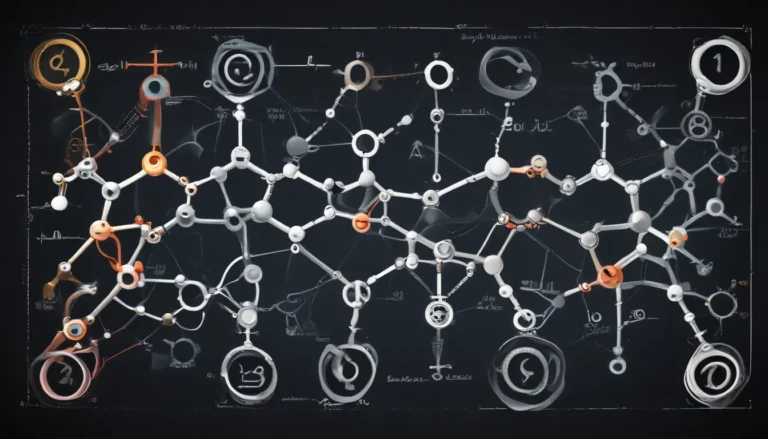A Note About Images: The images used in our articles are for illustration purposes only and may not exactly match the content. They are meant to engage readers, but the text should be relied upon for accurate information.
Welcome to the fascinating realm of atoms, the tiny building blocks that form the basis of all matter in the universe. In this article, we will explore 15 captivating facts about atoms that will ignite your curiosity and broaden your understanding of the microscopic universe. From the intricacies of atomic structure to the significance of atomic bonding, get ready to embark on an enlightening journey through the realm of atoms.
The Smallest Units of Matter
At the heart of the universe lies atoms, the smallest units of matter that retain the unique characteristics of a specific element. These minuscule particles cannot be further divided by any chemical or physical means, making them the fundamental building blocks of all substances.
Mostly Empty Space
While atoms may appear solid in models, they are predominantly composed of empty space. The nucleus, which consists of protons and neutrons, occupies only a fraction of the atom’s volume, emphasizing the vast emptiness that lies within the seemingly solid structure.
Building Blocks of Elements
Atoms come together to form elements, the fundamental substances that constitute everything in the universe. With 118 known elements, each possessing its own distinct properties, atoms play a pivotal role in shaping the diverse array of materials we encounter in our daily lives.
Electrons in Orbit
Electrons, the negatively charged particles, revolve around the positively charged nucleus of an atom in specific electron shells or energy levels. These orbits dictate the chemical behavior of the atom, influencing its interactions and properties.
The Trio of Subatomic Particles
Atoms consist of three primary subatomic particles: protons, neutrons, and electrons. Protons carry a positive charge, neutrons are neutral, and electrons possess a negative charge, collectively forming the intricate structure of an atom.
Discovering Isotopes
Isotopes are variants of the same element that contain different numbers of neutrons, resulting in varying atomic masses. While isotopes share the same atomic number, they can exhibit distinct stability and radioactive properties, shedding light on the diverse nature of atomic structures.
The Magnitude of Empty Space
If we were to remove the empty space within all the atoms that constitute the human body, the remaining matter would fittingly occupy a volume the size of a sugar cube. This remarkable fact underscores the incredibly compact nature of atoms despite their vast numbers.
The Power of Molecular Bonds
Atoms possess the ability to bond with one another, forming molecules through intricate chemical reactions. These molecular combinations pave the way for the rich tapestry of substances that populate our world, showcasing the versatility and complexity of atomic interactions.
Influence of Atomic Bonding
The manner in which atoms bond to each other plays a crucial role in determining the physical and chemical properties of substances. Different types of bonds, such as ionic, covalent, and metallic bonds, give rise to distinct characteristics like conductivity, hardness, and melting points in materials.
Constant Motion
Atoms are in a perpetual state of motion, exhibiting vibrations, rotations, and movement within substances. This continuous activity is essential for understanding temperature, material behavior, and the underlying dynamics of the atomic world.
Unveiling the Periodic Table
The periodic table serves as a systematic framework for organizing elements based on their atomic number and properties, offering a comprehensive overview of the diverse array of atoms that populate the universe.
Insights from Spectroscopy
Spectroscopy, a field dedicated to studying interactions between matter and electromagnetic radiation, provides invaluable insights into the structure, energy levels, and spectral lines of atoms, unraveling the mysteries concealed within the atomic realm.
Unlocking the Power of Nuclear Reactions
Nuclear reactions unleash immense amounts of energy, showcasing the transformative power inherent in changes occurring within the nucleus of atoms. From the fusion processes in the sun to the destructive forces of atomic bombs, nuclear reactions underscore the unparalleled energy potential residing within atomic structures.
Delving Into Quantum Mechanics
Quantum mechanics, the branch of physics that elucidates the behavior of atoms and subatomic particles, offers a profound framework for comprehending the enigmatic world of atoms. Through quantum principles, scientists unravel the complexities of atomic behavior, paving the way for groundbreaking discoveries.
Conclusion: Embracing the Marvels of Atoms
In conclusion, atoms serve as the invisible architects shaping the fabric of our world, from the air we breathe to the celestial bodies that adorn the night sky. By unraveling the secrets and intricacies of atoms, we gain profound insights into the essence of our universe. Embark on a journey into the captivating realm of atoms and witness the awe-inspiring wonders that lie within.
Frequently Asked Questions (FAQs)
Can atoms be destroyed or created?
In ordinary chemical reactions, atoms cannot be created or destroyed. However, nuclear reactions can alter the composition of atoms, showcasing the transformative nature of atomic changes.
How many atoms are in a grain of sand?
A grain of sand contains an astounding number of atoms, estimated to be around 10^18 or one quintillion atoms, highlighting the remarkable intricacies at play within the seemingly mundane structures of the natural world.
Embracing the Diversity of Atoms
While some atoms possess the ability to exist independently, such as noble gases like helium and neon, the majority of atoms exhibit a preference for bonding with other atoms to form stable structures, emphasizing the intricate web of connections that define atomic interactions.
Unveiling the Realm of Stability
Not all atoms demonstrate stability, with certain isotopes showcasing radioactive properties that undergo spontaneous decay over time, underscoring the dynamic and evolving nature of atomic structures.
Illuminating the Invisible
Atoms, with their infinitesimal size, elude direct observation by the naked eye or conventional microscopes, necessitating specialized techniques like scanning tunneling microscopes to visualize these elusive entities, showcasing the remarkable advancements in scientific technology.
Trustworthy Insights, Unparalleled Discoveries
Our commitment to delivering engaging and reliable content is ingrained in our mission to illuminate and educate. Each fact presented on our platform is contributed by a diverse community of users, ensuring a rich tapestry of insights and information. With dedicated editors rigorously reviewing each submission, we uphold the highest standards of accuracy and authenticity, offering a platform where curiosity thrives and knowledge flourishes. Dive into the boundless universe of atoms with us and witness the wonders awaiting your exploration.
Through the lens of atoms, we glimpse the infinite possibilities of our world and the mysteries that beckon us to unravel their secrets. Join us on this enlightening journey through the microscopic world of atoms, where every discovery leads to a deeper appreciation of the intricate tapestry of existence.






